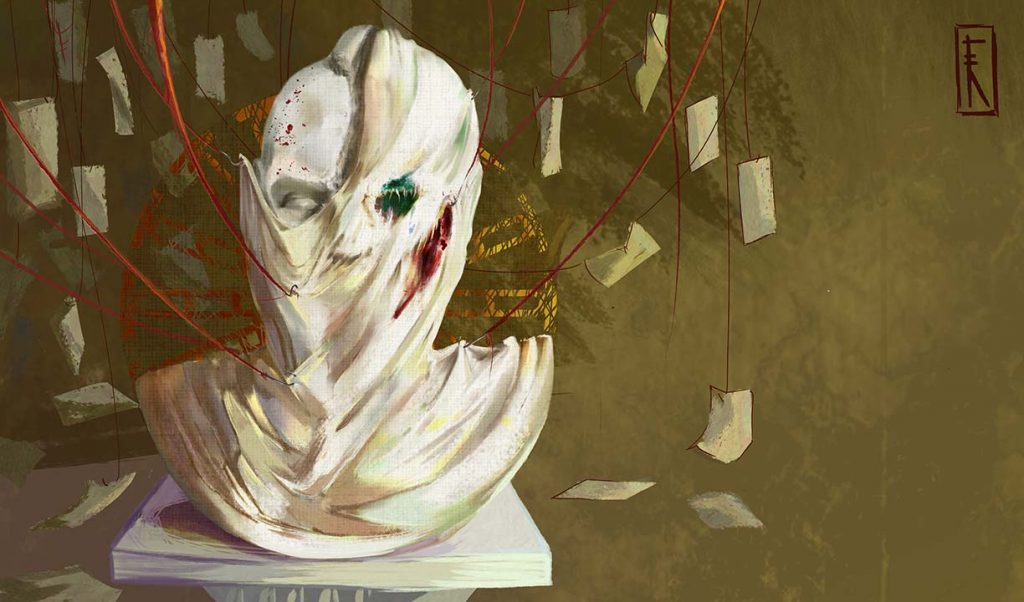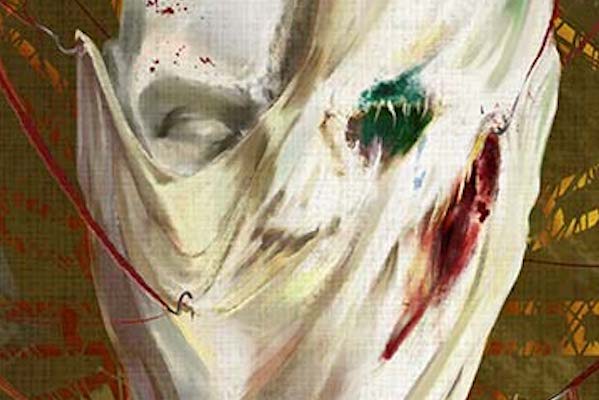An analysis and progression of loner cinema
WRITTEN BY MIKAEL TRENCH
ILLUSTRATED BY TIA NAGARAJ

Like many creatives, filmmakers can relate to the idea of loneliness. Countless of the industry’s most acclaimed directors, from Peter Jackson to Quentin Tarantino, grew up as oddball weirdo kids who struggled to connect with others. Of course, this is likely because their many obsessions are different from the norm, obsessions that would later benefit them in their creative careers. Having these backgrounds, it’s no wonder some of the most popular films tell intricate stories about societal outsiders.
In 1976, one such film that took the world by storm was Martin Scorsese’s acclaimed character study, “Taxi Driver.” The story focuses on an insomniac Vietnam War vet who takes a job as a nighttime New York taxi driver only to use his new point of view to deliver justice in his own twisted manner. The film was a hot topic at the time for its unprecedented levels of brutal violence but is now seen as one of the greatest films of all time, influencing future filmmakers in the process.
Director Todd Phillips took direct inspiration from Scorsese when crafting his 2019 film “Joker,” a similar character study that goes into the backstory of the iconic Batman villain. The film received similar backlash due to its shocking use of violence while getting critical praise thanks to its gritty direction and a masterful performance by lead actor Joaquin Phoenix. Both films have found their place, each managing to receive massive box office success — a clear sign that audiences are drawn into these darker narratives for a reason. With “Taxi Driver” and “Joker” sharing so much in common despite the over 40-year gap in their release, what about them has defined the loner archetype?
“Taxi Driver” came out during a change in time for both society and film. With the dark shades of American society coming to the forefront of households everywhere, cinema began reflecting this shift. Gone were the days of glamorous Hollywood studio productions and in came the more down-to-earth, rough-around-the-edges storytelling the world needed. Often called New Hollywood, this period starting in the late ’60s saw many of the most acclaimed directors of all time start their careers with defining works.
From Arthur Penn’s horrifically violent 1967 crime thriller “Bonnie and Clyde” to Ralph Bakshi’s 1975 attack on racial stereotypes “Coonskin,” the world was proving to the industry that cinema could tell stories that had more to say under the hood. “Taxi Driver” was one of the many influential films from this time. Taking a far grungier approach to its storytelling and following an everyday man who is frustrated with the corruption and hostility he experiences daily. From intense domestic abuse to sickening racism, “Taxi Driver” shows it all in a brutally honest manner that connected with audiences at the time.
“Joker,” while taking place in the early ’80s, still manages to bring up imagery that audiences in 2019 can identify with one way or another. It deals with the amounting frustration caused by societal pressures and issues. How the film goes about this, however, is more exaggerated, with Gotham City reacting to the dirty words of politicians in big ways. The film also makes commentary on how the media finds methods to capitalize on such individuals for the sake of entertainment. While the idea is not pushed as far, there is enough to chew on for audiences to see the real-world parallels.

The actual filmmaking craft of both films equally aided in their connection towards audiences. Despite being at the helm of a few features before, “Taxi Driver” was the show stealer that made Scorsese a household name amongst the industry. Categorized as a neo-noir, the film’s use of heavy contrast, shadows and expressive cinematography communicate the down and dirty atmosphere. It pushes the aesthetic even further, with its use of color not only creating contrast, but also communicated vividly Bickle’s emotional state. Similarly, the musical score by Bernard Hermann aids in the experience. Using an uneven assortment of instruments, the musical score represents the unpredictable nature of city life.
Phillips brought a different flavor to his interpretation of the clown prince of crime. He uses his fictional environment to express the loner state of Fleck, bringing an everyman feel to Gotham City that has never been committed to film prior. This grimier feel, coupled with cinematography that expresses Fleck’s debilitating mental state, helped convey the idea of isolation in a hauntingly effective manner.
Of course, character studies wouldn’t work without intriguing characters and these films have them in spades. Robert De Niro’s turn as Travis Bickle remains as one of the actor’s most acclaimed performances. To prepare for the role, De Niro famously took a job as a taxi driver and lost 35 pounds to appear as an outsider. His style of acting also made room for some iconic improvised moments, most notably the “You talking to me?” sequence. Bickle began as a grayscale look at the typical film protagonist, where the question of whether he is good or bad for his deeds is up to the interpretation of the audience. The film never takes the idea to any nuanced place, as it is implied that his actions are ultimately heroic, possibly as a way for the loner in all of us to see that we can make a difference.
Whether you prefer more over-the-top portrayals of the Joker character such as Cesar Romero from the 1966 “Batman” TV series or the grittier approaches such as Heath Ledger in “The Dark Knight” (2008), going about recreating the clown is no small task. The character himself was a different approach for a comic book villain. Especially when you consider he was never able to take on Batman in any physical fight, yet he still managed to push him to the limit and became a grand nemesis.
Portraying this and giving the character an origin story proved to be a challenge, but Phoenix and Phillips were up to the task. Both throw much of what we are accustomed to the character out of the window, crafting their own interpretation of the villain while keeping enough of the characteristics that give the character his identity. In this way, the film crafts Fleck’s origin to be surprisingly sympathetic in the beginning, taking the time to have the audience feel for Fleck’s numerous struggles given his mental condition. In no small part is this due to Phoenix’s harrowing performance. He made numerous physical changes to prep for the role, including losing 50 pounds to appear disfigured.
As the film goes on, Phoenix’s actions become more sickening and it is up to the audience to ask themselves whether they sympathize with Fleck by the end. With the lack of any moral compass to draw the line between good or bad, the film can add a level of ambiguity to itself that helps it stand out.

Why do we find loner cinema so engrossing? Both “Taxi Driver” and “Joker” present loners as sadistic individuals who end up doing horrendous things to shake off their personas. Is it commentary for something more or simply senseless violence? Is this how all loners will end up? Whatever the answer may be, there is an undeniable draw towards these kinds of stories. While cinema can be a place of escapism, films such as these can have an equally powerful effect, letting us sit down and take a hard look at the way society has shaped outcasts.
While the journey these characters take may not be entirely identifiable, the hardships they experience on the way certainly are. The frustrations of loneliness are problems countless moviegoers can relate to, and seeing those frustrations expressed on the big screen is almost therapeutic. And for some of those viewers, the experience proved to be more than that, inspiring creativity and motivation to tell their stories in manners that would be anything but forgotten. Sure, it takes a bit of exaggeration to get their message across, but hey, without that extra hint of fantasy, it just wouldn’t be a monumental film now would it?

